Raspberry Pi 3 A+
by Raspberry Pi




Pint-sized power! The Raspberry Pi 3 Model A+ packs all of the processing and wireless power of the 3 B+ into a significantly smaller package.
It has a 64-bit 1.4GHz quad core processor, 512MB of RAM, fast dual-band 802.11 b/g/n/ac wireless LAN, and Bluetooth 4.2.
It works great with our HATs and pHATs, and we've got brand-new Pibow Coupé cases, in four colours including RAINBOW!
- 1.4GHz 64-bit quad-core ARM Cortex-A53 CPU (BCM2837)
- 512MB RAM
- On-board wireless LAN - dual-band 802.11 b/g/n/ac (CYW43455)
- On-board Bluetooth 4.2 HS low-energy (BLE) (CYW43455)
- 1 x USB 2.0 port
- 40 GPIO pins
- Full size HDMI 1.3a port
- Combined 3.5mm analog audio and composite video jack
- Camera interface (CSI)
- Display interface (DSI)
- microSD slot
- VideoCore IV multimedia/3D graphics core @ 400MHz/300MHz
With the ARMv8 processor it can run the full range of ARM GNU/Linux distributions, including Snappy Ubuntu Core, as well as Microsoft Windows 10 IoT edition.
You'll need the latest NOOBS image for the Wireless LAN and Bluetooth drivers to be installed. We sell a pre-imaged NOOBS card.
Adding one of our three-port USB hubs with ethernet will let you use additional USB devices and add wired networking.
Way faster processing!
The previous A+ had a single-core 700MHz CPU, but the addition of the quad-core 1.4GHz BCM2837 SoC with improved thermals to the Pi 3 A+ gives a huge performance boost. The VideoCore is clocked at 400MHz for video processing and the 3D graphics processor runs at 300MHz.
Now with fast wireless!
The Pi 3 A+ now has wireless! It's the same fast, dual-band wireless chip (CYW43455) as the Pi 3 B+, with 802.11 b/g/n/ac wireless LAN and Bluetooth 4.2.
The dual-band 2.4GHz and 5GHz wireless LAN enables faster networking with less interference (although the higher bandwidth has less range), and the new PCB antenna technology should allow better reception.
Bluetooth allows you to use a wireless keyboard/trackpad without extra dongles, keeping things nice and tidy.
GPIO and layout
The GPIO header remains the same as the previous A+ (and the Pi 3 B+ and Zero / Zero W), with 40 pins. Be aware that the new metal shielding on the wireless circuitry and the SoC may cause shorts against larger components on the underside of HATs, pHATs, and SHIMs. In the first two cases, standoffs will help; in the latter, a couple of small pieces of insulating tape or Kapton tape will prevent any shorts.
-
Raspberry Pi 3 A+
SC0130£23.75
Essentials
Other things that could come in handy!
-
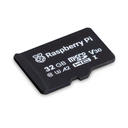 Raspberry Pi 5 Official microSD Card (pre-installed) – 32GB+ £8.00
Raspberry Pi 5 Official microSD Card (pre-installed) – 32GB+ £8.00 -
Black HDMI cable – 1.5m+ £5.75
-
Raspberry Pi Keyboard – United Kingdom / Red/White+ £13.50
-
Raspberry Pi Mouse – Red/White+ £6.25
Protect your Pi with Pibow
-
 Pibow 3 A+ Coupé (for Raspberry Pi 3 A+) – Coupé Rainbow+ £6.00
Pibow 3 A+ Coupé (for Raspberry Pi 3 A+) – Coupé Rainbow+ £6.00 -
 Pibow 3 A+ Coupé (for Raspberry Pi 3 A+) – Coupé Ninja+ £6.00
Pibow 3 A+ Coupé (for Raspberry Pi 3 A+) – Coupé Ninja+ £6.00 -
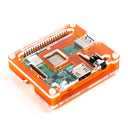 Pibow 3 A+ Coupé (for Raspberry Pi 3 A+) – Coupé Tangerine+ £6.00
Pibow 3 A+ Coupé (for Raspberry Pi 3 A+) – Coupé Tangerine+ £6.00
Official Raspberry Pi Power Supply
-
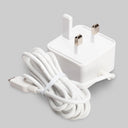 Raspberry Pi 12.5W Micro USB Power Supply (for Pi Zero 2 W, 3 B+ and earlier) – United Kingdom+ £7.50
Raspberry Pi 12.5W Micro USB Power Supply (for Pi Zero 2 W, 3 B+ and earlier) – United Kingdom+ £7.50 -
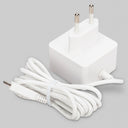 Raspberry Pi 12.5W Micro USB Power Supply (for Pi Zero 2 W, 3 B+ and earlier) – Europe+ £7.50
Raspberry Pi 12.5W Micro USB Power Supply (for Pi Zero 2 W, 3 B+ and earlier) – Europe+ £7.50 -
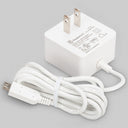 Raspberry Pi 12.5W Micro USB Power Supply (for Pi Zero 2 W, 3 B+ and earlier) – United States+ £7.50
Raspberry Pi 12.5W Micro USB Power Supply (for Pi Zero 2 W, 3 B+ and earlier) – United States+ £7.50
Need larger quantities? Bulk orders can be placed via our wholesale store! ❤️
Shop with confidence – we've been serving the hobbyist electronics, Maker, and retro gaming communities since 2012.
- Satisfaction or refund guarantee
- Worldwide shipping via mail or courier
- 57,000+ customer reviews
- Approved Raspberry Pi Reseller
- Secure website and payments







